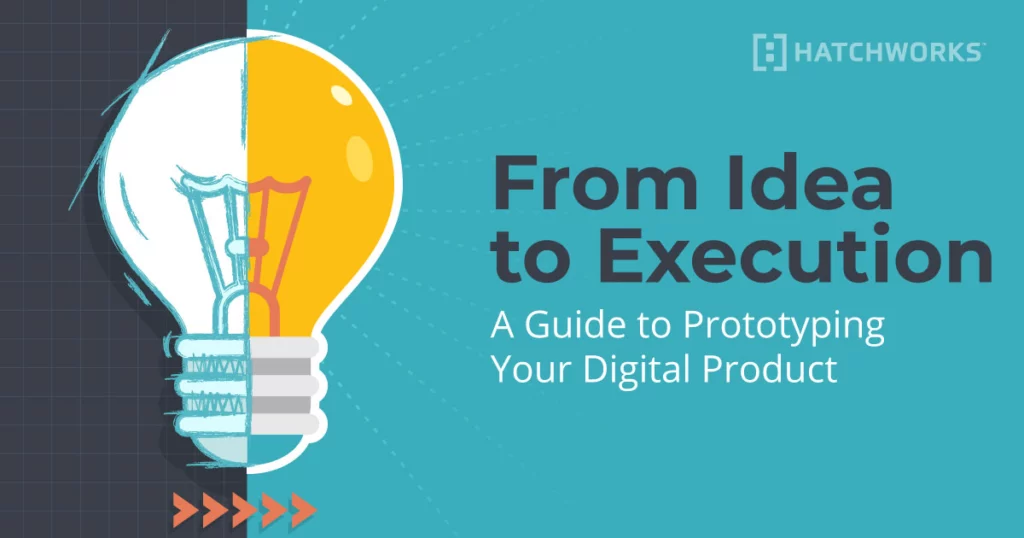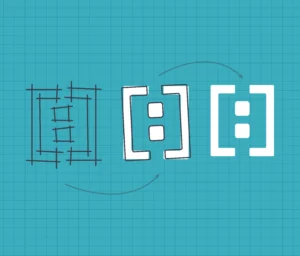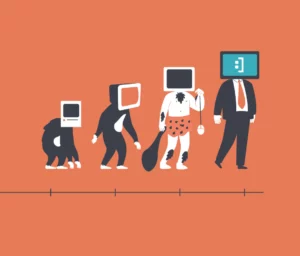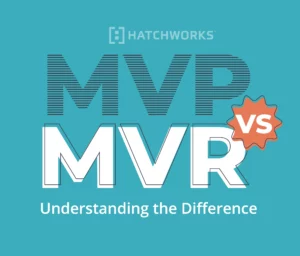Digital product prototypes are an essential part of the product development process, allowing designers and developers to test and refine their ideas before committing to a final product.
There are various types of prototypes, including wireframes, mockups, and interactive prototypes, which can be used at different stages of development and for different purposes.
The process of creating a prototype involves defining the idea and target audience, researching similar products and gathering feedback, creating a plan, designing the user interface, building the prototype, and testing and iterating on the prototype.

- What a digital product prototype is and what it can be used for
- The different types of digital product prototypes
- The different steps involved in creating a digital product prototype
- Tips for creating a successful digital product prototype
- Testing the functionality of a digital product prototype
- The importance of prototypes when developing new products
- Frequently Asked Questions
- Summary
What a digital product prototype is and what it can be used for
A digital product prototype is a preliminary model of a digital product that is used to test and demonstrate its core functionality and user experience.
It is an important tool for designers and developers as it allows them to explore and refine the design and functionality of a product before investing the time and resources required to build a fully-featured product.
Prototyping can be used for a variety of purposes, including:
- Demonstrating the concept and user experience of a product to potential investors or customers
- Identifying and addressing usability issues early in the development process
- Gathering feedback from potential users to refine and improve the product
- Facilitating communication and collaboration among team members
- Providing a foundation for the development of a fully-featured product
Prototyping is an essential part of the product development process as it allows designers and developers to test and refine their ideas before committing to a final product.
The different types of digital product prototypes
There are several different types of digital product prototypes that can be created, ranging from low-fidelity wireframes to high-fidelity interactive prototypes. The type of prototype you choose will depend on your goals, the stage of development you are at, and the resources and time available to you.
Here are some common types of digital product prototypes:
Wireframes
Wireframes are simple, low-fidelity diagrams that outline the layout and structure of a product. They are typically used early in the design process to establish the basic structure and functionality of a product. Wireframes are usually black and white and do not include detailed design elements or interactive features.
Mockups
Mockups are static, high-fidelity visual representations of a product. They typically include more detailed design elements and may include some interactive features, such as clickable buttons and links. Mockups are useful for demonstrating the overall look and feel of a product, as well as for gathering feedback on the design.
Interactive prototypes
Interactive prototypes are dynamic, high-fidelity representations of a product that allow users to interact with the product as if it were a fully-featured product. They can include a wide range of interactive features and can be as detailed and functional as the final product. Interactive prototypes are useful for testing the usability and user experience of a product and for demonstrating the full range of features and functionality to potential investors or customers.
Wireframes and mockups can be useful for early-stage prototyping, while interactive prototypes are more suitable for later stages of development when you are ready to test and refine the full range of features and functionality of your product.
The different steps involved in creating a digital product prototype
Creating a digital product prototype typically involves several steps, including designing the user interface, building the prototype, and testing and iterating on the prototype. Here is a more detailed breakdown of the process:
- Define your idea and target audience: Before you start prototyping, it’s important to clearly define your idea and identify your target audience. This will help you focus your efforts and ensure that your prototype addresses the needs and pain points of your intended users.
- Research similar products and gather feedback: It can be helpful to research similar products and gather feedback from potential users to identify unique features and functionality that will set your product apart, as well as any issues that you may need to address during the prototyping process.
- Create a plan: Develop a plan for your prototype that includes a list of features and functionality, as well as a rough timeline for development. Keep in mind that your prototype does not need to be a fully-featured product – it just needs to demonstrate the core functionality and user experience.
- Choose prototyping tools: There are a variety of tools available for prototyping digital products, ranging from simple wireframing tools to more advanced prototyping software. Choose the tools that best fit your needs and skill level.
- Design the user interface: Begin designing the user interface of your product by creating wireframes or low-fidelity mockups. These should outline the basic layout and structure of your product, including the placement of key elements such as buttons, links, and menus.
- Build the prototype: Once you have a clear idea of the layout and structure of your product, you can start building your prototype. Depending on the complexity of your product, this could involve adding detailed design elements, interactive features, or even functional code.
- Test and iterate: Once you have a working prototype, it’s important to get feedback from potential users and make adjustments as needed. This can help you identify any usability issues and fine-tune the design and functionality of your product.
- Refine and polish: As you gather feedback and make changes, be sure to pay attention to the overall user experience and design of your product. A polished prototype can help you attract investors or customers and give you a solid foundation for building a successful digital product.
The process of prototyping a digital product involves a combination of design, development, and testing to create a functional and user-friendly product. By following these steps, you can create a prototype that effectively demonstrates the core functionality and user experience of your product and helps you refine and improve it before launching it to the market.
Tips for creating a successful digital product prototype
Here are some tips for creating a successful digital product prototype:
- Clearly define your goals: Before you start prototyping, it’s important to clearly define your goals for the prototype. This will help you stay focused and ensure that you are creating a prototype that meets the needs of your intended users.
- Gather feedback from potential users: One of the key benefits of prototyping is that it allows you to gather feedback from potential users. This can help you identify usability issues and refine the design and functionality of your product.
- Use effective communication tools: Prototyping often involves working with a team of designers, developers, and other stakeholders. It’s important to use effective communication tools, such as project management software or online collaboration tools, to keep everyone on the same page and ensure that the prototype is moving forward smoothly.
- Create a design that is easy to understand and use: The user interface of your product should be easy to understand and use. This means using clear and intuitive navigation, consistent design elements, and clear calls to action.
- Test and iterate: Prototyping is an iterative process, which means that you will likely need to make adjustments to your prototype based on feedback and testing. Don’t be afraid to experiment and try new things – the goal is to create a product that meets the needs of your users.
- Keep it simple: It’s important to keep your prototype as simple as possible, especially if you are working with limited resources or time. Focus on the core functionality and user experience of your product, and save more advanced features for later iterations.
By following these tips, you can create a successful digital product prototype that effectively demonstrates the core functionality and user experience of your product and helps you refine and improve it before launching it to the market.
Testing the functionality of a digital product prototype
Testing the functionality of a digital product prototype is an important step in the prototyping process, as it helps you identify and address any usability issues and fine-tune the design and functionality of your product. Here are some ways to test the functionality of your prototype:
- Gather user feedback: One of the most effective ways to test the functionality of your prototype is to gather feedback from potential users just like you would during a beta test. You can do this through surveys, focus groups, or individual user testing sessions. User feedback can help you identify any usability issues and areas for improvement.
- Conduct user studies: User studies are more in-depth evaluations of your prototype that involve observing users as they interact with the product. User studies can be conducted in a lab setting or in the field, depending on your goals and resources.
- Use analytics and metrics: If your prototype includes functional code, you can use analytics and metrics to track user behavior and identify any issues or areas for improvement. This can be particularly useful for testing the performance and scalability of your product.
- Use A/B testing: A/B testing involves testing two versions of a product side-by-side to see which one performs better. This can be a useful tool for comparing different design or functionality options and identifying the most effective solution.
Overall, there are a variety of methods for testing the functionality of a digital product prototype. It’s important to gather as much feedback and data as possible to help you identify and address any issues and improve the overall user experience of your product.
The importance of prototypes when developing new products
Prototyping is an essential part of the product development process, as it allows designers and developers to test and refine their ideas before committing to a final product. Prototyping can reduce development time and costs by identifying and addressing any issues or challenges early in the development process. It can also improve customer satisfaction by gathering feedback from potential users and making adjustments based on their needs and preferences.
In addition, prototyping can facilitate communication and collaboration among team members by creating a shared visual representation of the product. Prototyping can also be an effective way to demonstrate the concept and user experience of a product to potential investors or customers.
Overall, the use of digital product prototypes can greatly benefit the development of new products. So, it is highly recommended to use digital product prototypes in product development to improve design accuracy, reduce development costs, facilitate communication and collaboration, and demonstrate the concept and user experience of a product.
Frequently Asked Questions about Digital Product Prototypes
The product design process involves understanding the needs and pain points of the target audience, generating and prototyping design ideas, testing and refining the design, and creating a final product.
A great digital experience is one that is easy to use, efficient, and enjoyable for the user.
Summary
If you’re interested in taking advantage of our Digital Product Prototyping service at HatchWorks, contact us to schedule a consultation.
Our team of designers and developers will work with you to create a prototype that effectively demonstrates the core functionality and user experience of your product.
Don’t hesitate to reach out to us if you have any questions or need more information.



